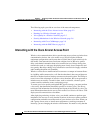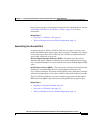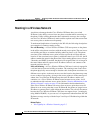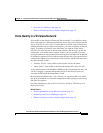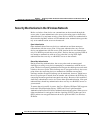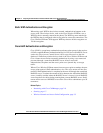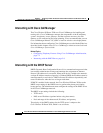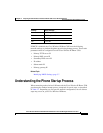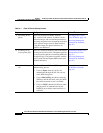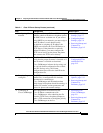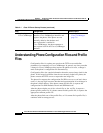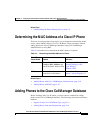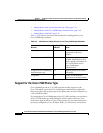
Chapter 2 Preparing to Install the Cisco Wireless IP Phone 7920 on Your Wireless Network
Understanding the Phone Startup Process
2-10
Cisco Wireless IP Phone 7920 Administration Guide for Cisco CallManager Release 3.3 or Later
OL-3930-02
Table 2-1 Cisco IP Phone Startup Process
Step Configuration Related Topics
1. Powering on the
phone
The Cisco Wireless IP Phone 7920 has
non-volatile Flash memory in which it stores
firmware images and user-defined preferences.
At startup, the phone runs a bootstrap loader that
loads a phone image stored in Flash memory.
Using this image, the phone initializes its
software and hardware.
Providing Power to the
Cisco IP Phone, page 3-9
Resolving Startup and
Connectivity Problems,
page 9-2
2. Scanning for an
access point (AP)
The Cisco Wireless IP Phone 7920 scans the RF
coverage area with its radio. The phone searches
for access points that have a matching SSID and
encryption type. The phone associates with the
access point with the highest RSSI and lowest
channel utilization.
Interacting with the Cisco
Aironet Access Point,
page 2-2
Resolving Startup and
Connectivity Problems,
page 9-2
3. Authenticating with
AP
The Cisco Wireless IP Phone 7920 begins the
authenticating process.
• If set for Open, then any device can
authenticate through the AP. You can set
static WEP encryption.
• If set to Shared Key, the phone sends the
WEP key and the AP must verify the WEP
key before network access is available.
• If set for LEAP, then the LEAP user name
and password are authenticated by the
RADIUS server before network access is
available.
Security Mechanisms in
the Wireless Network,
page 2-6



